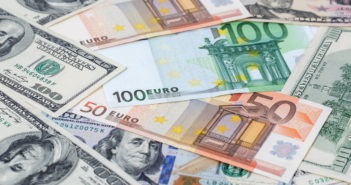The euro-zone publishes the preliminary read of Q1 GDP on Tuesday, April 30th, at 9:00 GMT. The old continent markedly slowed down in 2018 after enjoying robust growth in 2017. A series of one-off factors including bad weather, retooling of car factories, and even the flu turned into a bigger problem of weaker global demand.
In Q4, the economies of the 19-country bloc grew by 1.1%, a meager rate. Quarter over quarter, the euro area expanded by only 0.2% in the last quarter of 2018. Markets expect growth to have picked up on the quarterly read to 0.3%, while YoY figures are projected to repeat 1.1%.
The slightly better forecasts are based on some signs of rejuvenation, especially in the services sector. Domestic consumption is rising alongside wages. The European Central Bank highlights upbeat wage growth as a positive factor.
Also, the two other major global economies are doing better. Chinese growth came out at 6.4% annualized thanks to credit stimulus and 5G investment. US growth came out at 3.2%, albeit based on low inflation.
Recovery? Not so fast
Fewer global headwinds and upbeat services activity support cautious optimism. However, perhaps more caution and less optimism are warranted. Markit’s Manufacturing PMI for the services sector dropped deep into contraction territory with 44.1 points in March. Other countries are not doing much better.
Moreover, the pickup in the Chinese economy, an importer of European goods, will take time to reach the old continent. So, improvement may take time to materialize.
A quarterly growth rate of 0.3%, or around 1.2% annualized, is still quite modest, but perhaps not modest enough. The European Central Bank is watching the data very closely and impacts its decisions, thus shaking the common currency.
Any miss could trigger a sell-off in the euro. A beat will boost it. Given all the above, 0.2% is more likely than 0.4%. The risks are skewed to the downside.
Get the 5 most predictable currency pairs
Euro-zone GDP expectations may be too high – watch EUR/USD
